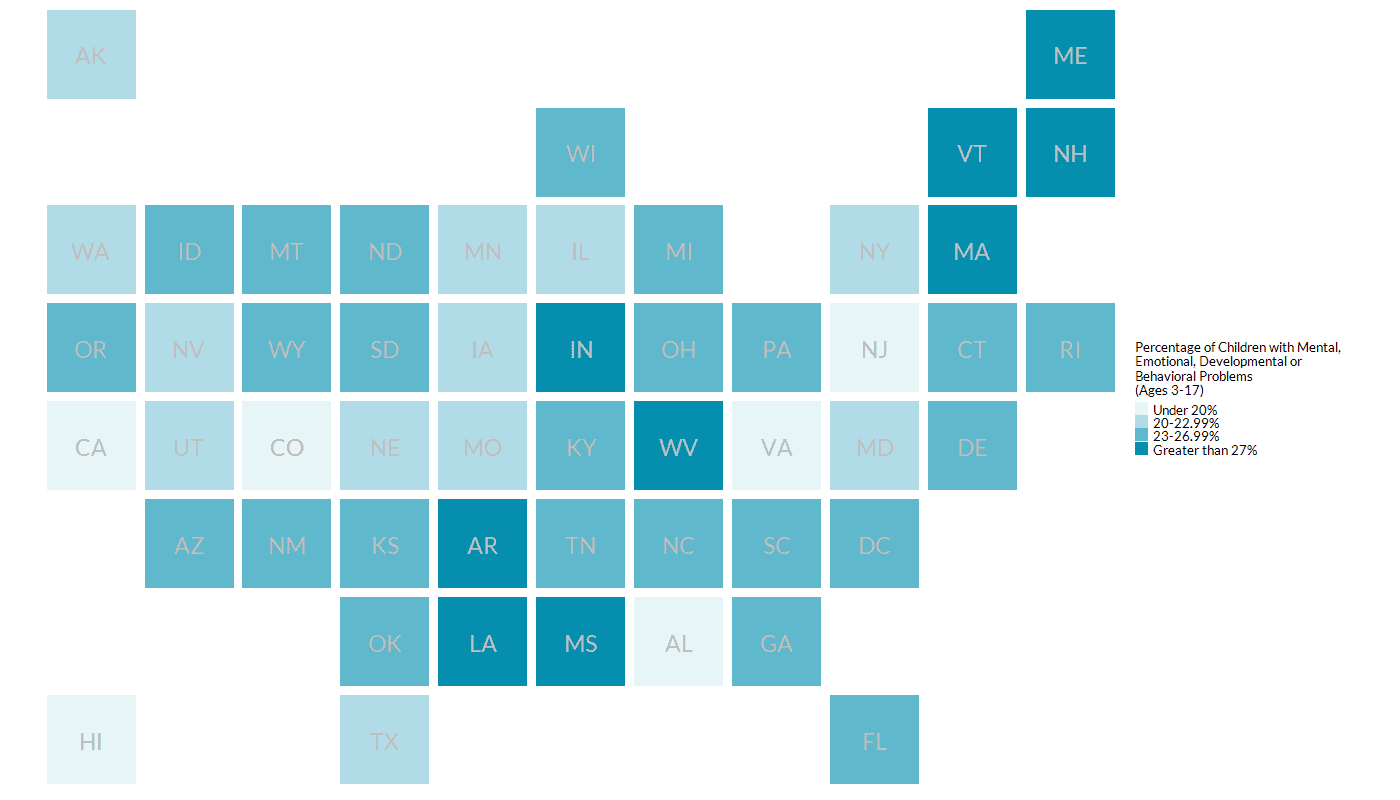
Maternal & Child Health Data
Mental, Emotional, Developmental, or Behavioral Conditions, 2022
More than 20 percent of children aged 3–17 in the United States have at least 1 diagnosed mental, emotional, developmental, or behavioral (MEDB) condition. If untreated, MEDB conditions can become more serious over time and affect long-term health and well-being outcomes in children and adults. MEDB conditions can emerge in infancy and early childhood, heightening the importance of preventive measures and early identification in supporting long- term child well-being. Child-, family- and community-level factors can all contribute to the development of MEDB conditions in children; example factors include child temperament, parental mental health and stress, financial hardship or poverty, or violence in the home or community.
Not all parents have equal access to parenting supports and community resources that can help support their child’s healthy emotional development, and structural disinvestment in communities of color can drive disparities across racial and ethnic groups. The table below presents data disaggregated by race and ethnicity to help us identify inequities and work toward solutions that promote equity.
Home Visiting as Part of the Solution. Home visitors educate parents about child development and age-appropriate behavior and can help them identify MEDB concerns early on by offering screenings and asking about parental concerns. Home visitors also connect parents to mental health services such as infant and early childhood mental health consultants and other supportive resources.. Such information and skills can help parents support their children’s healthy development, identify mental, emotional, developmental problems early, and get connected to needed supports.
Mental, Emotional, Developmental, or Behavioral Conditions by State, 2019–2020

| State | All Groups | Asian | Black or African American | Hispanic | White | Another Group |
Notes: NA indicates that the total number of respondents to this measure (unweighted denominator) is less than 30, which does not meet Maternal and Child Health Bureau data display criteria. Counts associated with specific racial and ethnic groups (that is, Asian, Black/ African American, Hispanic, White) are mutually exclusive.
Definition: Mental, emotional, developmental, and behavioral (MEDB) conditions refers to the percentage of children aged 3–17 who have 1 or more medically diagnosed MEDB condition and/or qualify under Children with Special Health Care Needs (CSHCN) emotional, behavioral, or developmental criteria, as reported by a parent or guardian.
Source: Child and Adolescent Health Measurement Initiative. 2019–2020 National Survey of Children’s Health (NSCH) data query. Data Resource Center for Child and Adolescent Health supported by Cooperative Agreement U59MC27866 from the U.S. Department of Health and Human Services, Health Resources and Services Administration’s Maternal and Child Health Bureau (HRSA MCHB). www.childhealthdata.org.